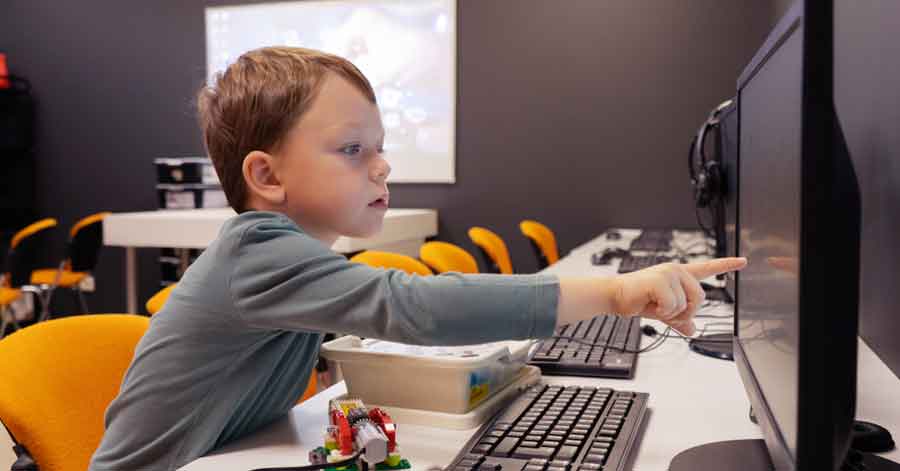Gone are the days when coding was meant only for software engineers. Now, children too want to learn coding so that they can create their own websites, blogs, mobile applications and software. Take Arham Om Talsania. The six-year-old learnt coding from his father and now holds the Guinness World Record for youngest computer programmer after clearing the Python programming language in the Microsoft certification exam.
The National Education Policy of 2020 states that coding will be taught in schools from Class VI as skills such as coding, a scientific temper and evidence-based thinking help students become innovative, adaptable and productive in today’s rapidly changing world.
Yasharka Bhattacharyya, 12, is a student of Central Model School in Barrackpore, near Calcutta, and started learning coding when he was nine years old. Now, games created by him can be found on the Google Play Store. “I had a passion for both computer art and programming and I got to know that the best way to marry art and programming is by creating games. So I started to learn game programming — C, VB, VB. net, C++ and C#, HTML, CSS, Javascript, Blender and Gimp — from online tutorials. I also taught myself graphics programming as well as computer graphics software from YouTube and several online documents. I spent two years learning all these. Then I got to know about game engines and taught myself about Unity game engines. I had already mastered C++ and C#; before making the game I learnt the .net framework. I created the graphics on my own and did the coding on my own too. Of course, I got help from a game programming community in India and the Internet,” says Yasharka. He also had to comprehend complex physics and maths that he hadn’t yet learnt at school, such as trigonometry, Newton’s law, the gravity formula and collision. His grandparents helped with those. “I’ve started my website and am also making a log for YouTube to help other children learn game programming,” Yasharka adds.
According to the National Science Foundation, 80 per cent of jobs created in the next decade will require maths and science skills. Use of technology and knowledge of coding will become a common denominator for all areas. “Coding is the DNA of the digital world. Every website, smartphone app, computer program, calculator and even microwave relies on it to operate. This makes coders the architects and builders of the digital age,” says Amitava Mukherjee, dean-in-acting at the School of Engineering and Technology in Adamas University, Barasat, North 24-Parganas. “In fact, computer sciences are becoming a key element in diverse areas of work, such as medicine and banking, where insight of programming and coding is of increasing importance. It is estimated that over the next decade, there will be 1.4 million jobs in computer sciences and only around 4,00,000 graduates qualified to do them,” he adds.
About 70 per cent of all new STEM jobs are in computing while only eight per cent of STEM graduates are from computer science, says data from non-profit organisation Code.org. According to a report by the World Economic Forum, around 133 million new roles will be created in the information technology domain by 2025.
Many companies, such as Next Education, Simplilearn, Vedantu and WhiteHat Jr, urged students to utilise their time during the lockdown to learn coding. Some of them even offer free online classes.
At seven or eight, most children have developed sufficient logical and critical thinking to learn coding and they do — thanks to coding summer camps, websites, tutors, after-school programmes and toys. There are also free and paid online resources, coaching institutes and video tutorials.
Apart from providing a competitive advantage, coding is fun and satisfying. It improves creativity and problem-solving, collaboration and communication skills too.
“Coding is a basic literacy requirement in today’s digital age. It teaches children to become creators as against consumers of technology. It balances the left and right brain, improving abstract thinking,” says Narayan Mahadevan, founder of the incubator, BridgeLabz.
When children learn to code, they gain a better understanding of the technology around them. “As they dive deeper into coding, they develop a passion for creating things useful for them as well as society. Besides, they always strive to do better than their peers and develop an innovative game, mobile application or software. This boosts their confidence in their own skills and abilities,” says Beas Dev Ralhan, co-founder and CEO of Next Education India Pvt. Ltd.
Says 14-year-old Debangshu Banerjee, “Coding is very interesting; I can make games and apps with it, which boost my interest. The career options in this field are also quite enticing.”
According to the US Bureau of Labor, median pay for software developers is $1,03,560 (Rs 76.5 lakh) per year, with demand expected to increase by 24 per cent per year from 2016 to 2026. In India, salaries for freshers range from Rs 3.5 lakh to Rs 8 lakh per annum.
So what are you waiting for? Start coding now.











